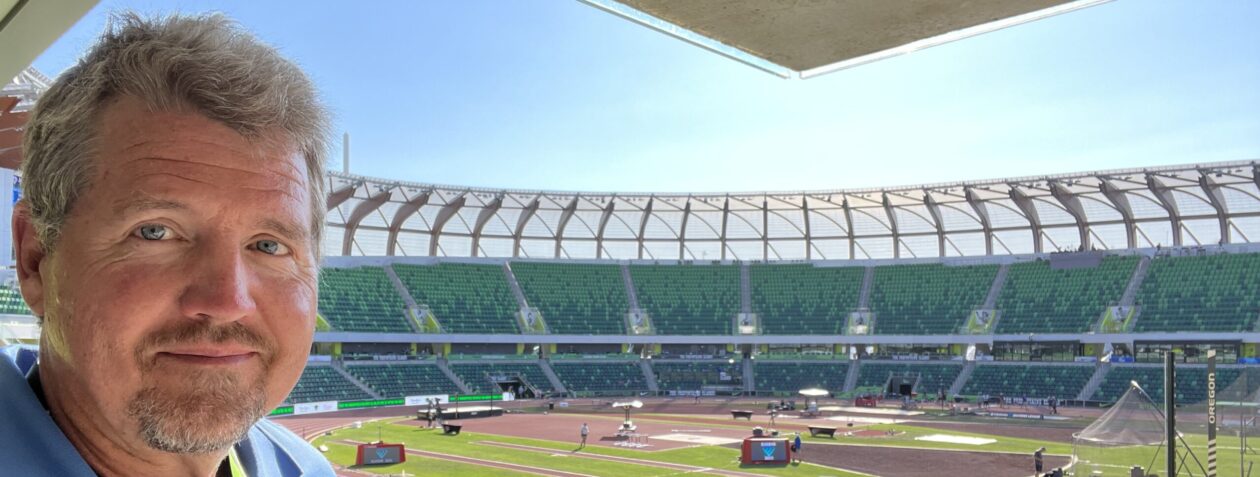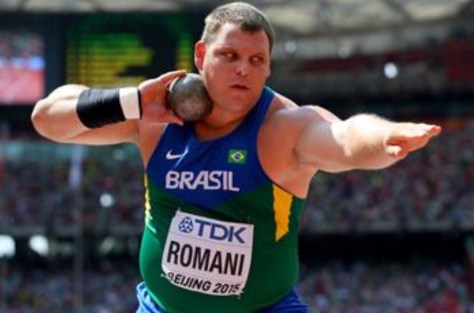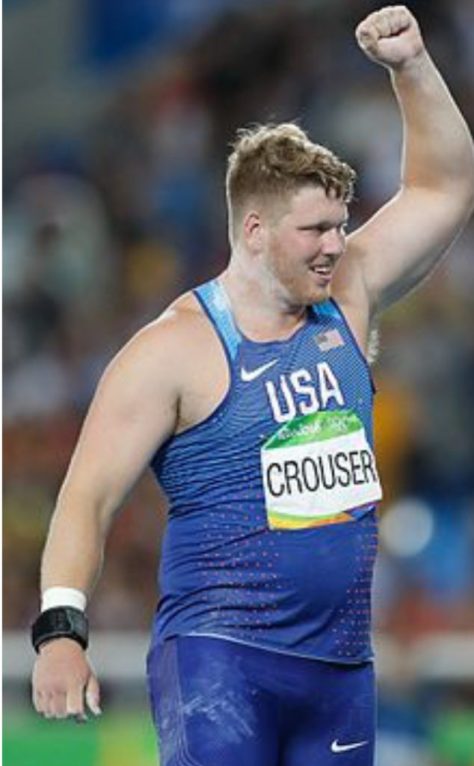
The discus is a fickle event. Timing is everything, and a strong headwind doesn’t hurt either.
Last year’s USATF men’s discus competition has attained legendary status (three competitors over sixty-six meters, including a monstrous 68.61m for Reggie Jagers) at least in part because of beneficent winds that presaged the arrival of a violent thunderstorm.
No storm swept into Drake Stadium last night, just an annoying bit of rain that made footing treacherous during the final round of the men’s disc, a competition that will be remembered as more odd than epic.
That may be fitting, as 2019 is an undeniably odd year for track and field athletes with the World Championships taking place in Doha in late September and early October—a full six weeks later than normal.
These US Championships were pushed back a month as well, leaving athletes with the challenge of staying sharp during a portion of the summer when there are few meets available here in the States.
That can mess with a person’s training plan and with their head, and may help to explain why neither of the two favorites in the men’s discus made the podium yesterday.
Reggie Jagers, after a fairly consistent summer that included two excellent Diamond League performances (64.89m for fourth in Doha and 64.59m for sixth in Rabat) did not even make it out of the prelims.
Mason Finley, the 2017 World Championship bronze medalist who finished second to Reggie here last year with a toss of 67.06m, earned the full six throws but ended up finishing seventh with a best of 61.05m.
As best I can tell, though, Mason will still represent the US at the Worlds as the man who finished third yesterday, Kord Ferguson, does not have the qualifying standard of 65.00m and Mason is the highest finisher other than the top two (Sam Mattis who took first with a season’s best 66.69m, and Brian Williams who came next with a PB of 65.76m) to have met that standard.
Back in the day, Kord would have had a few weeks to “chase the standard” and make the team for Doha, but this time around the USATF has designated these championships as the final chance for any athlete to achieve the needed mark.
If that seems confusing to you, don’t feel bad. As you can tell from this interview with Mason neither of us had a clear understanding of the current qualification system when we spoke after the competition.
Could that have anything to do with the fact that the IAAF is constantly tinkering with the process? That they made substantial changes to it last year then changed their minds and kind of changed it but not really? I’m going to let Mason and myself off the hook and say yes.
One thing that is clear is that Sam and Brian showed up ready to rumble. Each had his best throw in round one, and when Reggie failed to make the final it was clear that they were Doha-bound.
Kord’s route to the podium was, shall we say, a bit more circuitous. Competing in flight one, he sandwiched a pedestrian 60.13m between two fouls, then had to sit fingers and toes crossed while the flight two contestants did their best to send him packing.
He entered the final sitting eighth and last, but opened the proceedings with a PB of 63.25m and hung on for the bronze.
Just how in the hell did that happen?
I’m not sure that Kord himself knows, but you can hear his thoughts on the matter in this interview with him, Sam and Brian.
While on the subject of dramatic and perhaps inexplicable turnarounds, let us turn our attention to the women’s javelin.
A nice feature of the throws setup at Drake is that the discus or hammer can be run concurrently with the jav, so fans can enjoy two competitions simultaneously.
That’s a lot of enjoyment, especially when it means getting a chance to watch Kara Winger ply her craft.
Are you a fan of consistency? Of sustained excellence?
Kara won her first USATF title in 2008. Last year, right here in Des Moines, she won her eighth.
That’s a Tom Brady-like run, with the significant difference that Kara does not come across as a weird, kale-eating robot. Rather, she seems to take joy in every aspect of competing. She’s happy when she throws well. She’s happy for her competitors when they throw well. She is unfailingly polite to fans who want to say hello or take a selfie. She is remarkably gracious when folks like me shove a camera in her face and ask her to analyze her performance when she’s got fifteen relatives waiting to take her to dinner.
She is, as I refer to her in this interview, a national treasure. If you don’t like her, you probably don’t like ice cream.
Kara has competed a lot this year, and she has had some nice results, including 63.11m on June 6th in Rome, and 62.89m on July 9th in Lucerne.
So far, though, she has been unable to produce a big, sixty-five-metersish throw, and that was the case again yesterday.
Her 59.73m toss in round three gave her a four-meter cushion over Avione Allgood entering the final, but her inability to improve on that throw left the door open for the aforementioned dramatic turnaround, this time courtesy of Ariana Ince.
Ariana announced herself as a contender by nailing a two-meter PB of 63.54m in June, which made her performance in yesterday’s preliminary rounds difficult to characterize. Baffling? Maddening? Bizarre?
She opened with 46.80m and followed that up with 49.05m, so you tell me.
A round-three 52.95m bought Ariana three more attempts, but left her seven meters off the lead.
She remedied that situation in round five, drilling 61.06m and vaulting ahead of Kara. That throw would hold up for the win.
In a conversation afterwards, she made a valiant attempt to explain this rather astonishing turn of events.
Speaking of astonishing, third place went to Stanford’s Jenna Gray who hit a PB of 57.29m and who apparently competes in both track and volleyball for the Cardinal. Unless she has a twin sister who goes by the exact same name.
I will investigate this and other matters as the 2019 Toyota USATF Outdoor Track and Field Championships continue today!
Full results, by the way, are available here.






















